Genetically, blue tongues are a rarity in the animal world. However, some animals sport entirely or spotted blue tongues for self-defense, sun protection, increased heat absorption, and yet-to-be-understood reasons. In this guide, we’ll look at nine animals with blue tongues.
Read on to learn more!
1. Blotched Blue-Tongued Skink (Tiliqua nigrolutea)
The blotched blue-tongued skink (Tiliqua nigrolutea) primarily inhabits Tasmania and the southeastern regions of Australia. This omnivorous reptile lives in mostly grassy areas with plenty of vegetation for shelter and concealment. These robust lizards spend their days basking and foraging for food. Their diet consists mostly of plants, fruits, insects, and snails.
They conceal themselves under leaf litter, other vegetation, and rocks at night. They use their striking blue tongue as part of their threat display. When threatened, the blotched blue-tongued skink will face the threat and stick out their vivid blue tongue, warning the target.
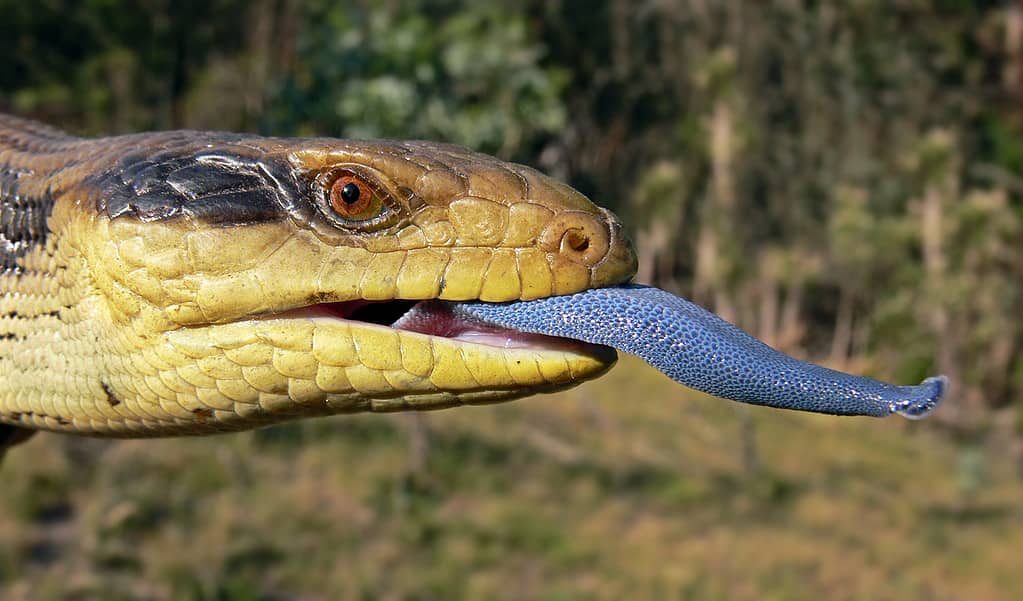
The blotched blue-tongued skink features a particularly vivid blue tongue.
©Benjamint444 / CC BY-SA 3.0 DEED – License
2. Eastern Blue-Tongued Skink (Tiliqua scincoides scincoides)
Native to eastern, southeastern, and coastal northern regions of Australia and the Tanibar Islands of Indonesia, the eastern blue-tongued skink (Tiliqua scincoides scincoides) enjoys an abundant population across its range. This species is well-adapted to wilderness and suburban life with its non-specialized omnivorous diet and flexible habitat requirements. This stocky lizard is the largest member of the skink family, reaching up to an impressive 24 inches in length.
Large snakes, Australian monitor lizards, large birds of prey, dingoes, and domestic dogs and cats are the primary predators of adult eastern blue-tongued skinks.

The eastern blue-tongued skink is the largest member of its genus.
©Geoff Penaluna / CC BY 2.0 DEED – License
3. Animals With Blue Tongues: Shingleback Skink (Tiliqua rugosa)
With a large head, short and blunt tail, distinctive armor-like scales, and dark blue tongue, the shingleback skink (Tiliqua rugosa) is an impressive and imposing reptile. Like other members of its genus, the shingleback skink uses its blue tongue as a threat display to ward off potential predators or competitors.
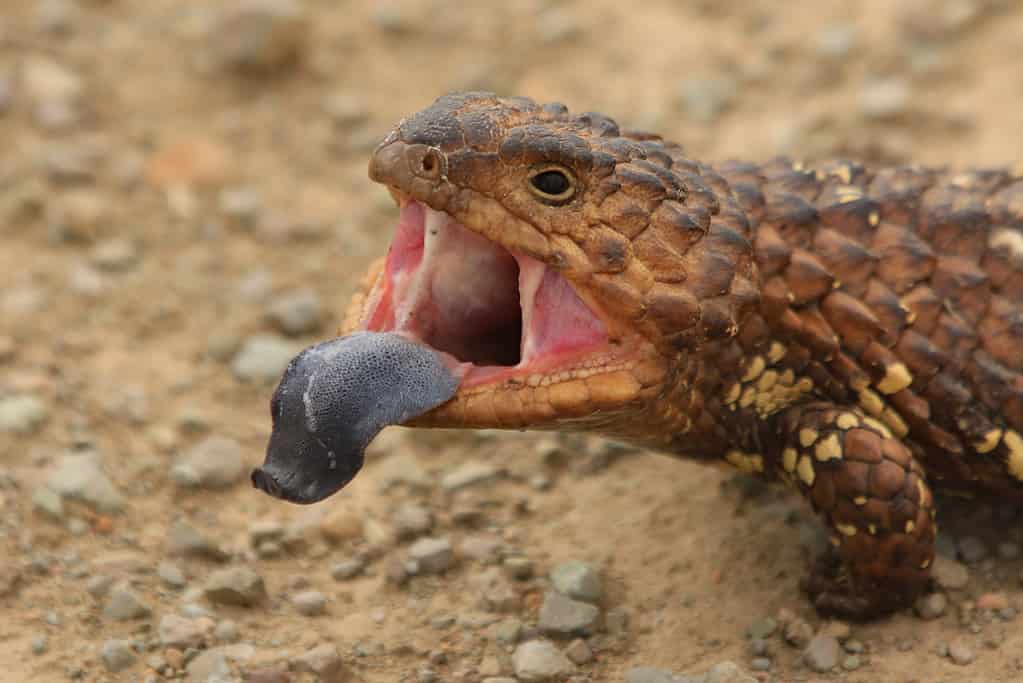
The shingleback skink sports a darker blue tongue than most close relatives.
©Marion Springer/iStock via Getty Images
4. Animals With Blue Tongues: Polar Bears (Ursus maritimus)
The largest extant species of bear and the world’s largest land carnivore, the polar bear (Ursus maritimus), also sports a rare blue tongue. Despite their snowy white fur, polar bears have black skin, which aids in the absorption and retention of heat. This helps keep them warm in their frigid home range. Like their skin, the polar bear’s tongue is blue-black to absorb heat.
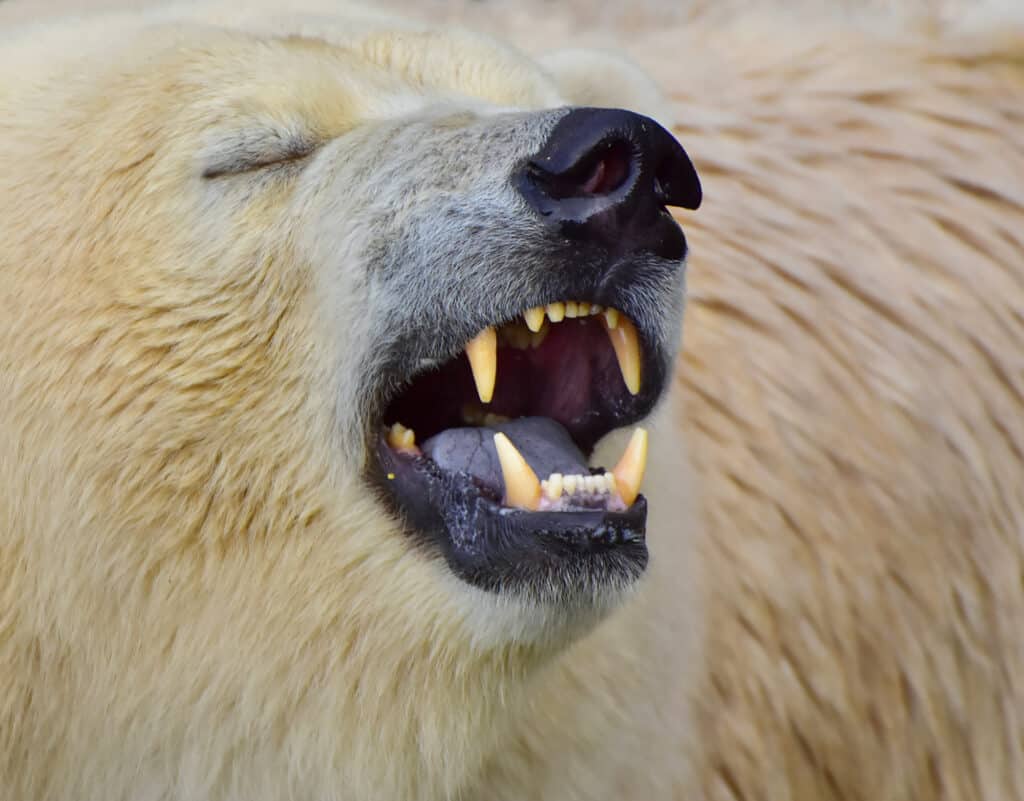
The blue-black tongue of the polar bear may aid in heat absorption.
©Unicorn555/Shutterstock.com
5. Giraffes (Giraffa camelopardalis)
The tallest living land animal in the world, the giraffe (Giraffa camelopardalis), features a long tongue with dark blue-purple coloration at the front region. The leading theory for this color adaption of the most exposed area of their long tongue is that the extra melanin provides natural sunscreen.
Since giraffes often browse the canopies of trees, they are more exposed to the sun’s intense rays. This blue coloration may provide extra UV protection while they forage and grab plants with maneuverable tongues. Since the blue tongue of the giraffe can grasp and pull plants, it is characterized as a prehensile appendage.
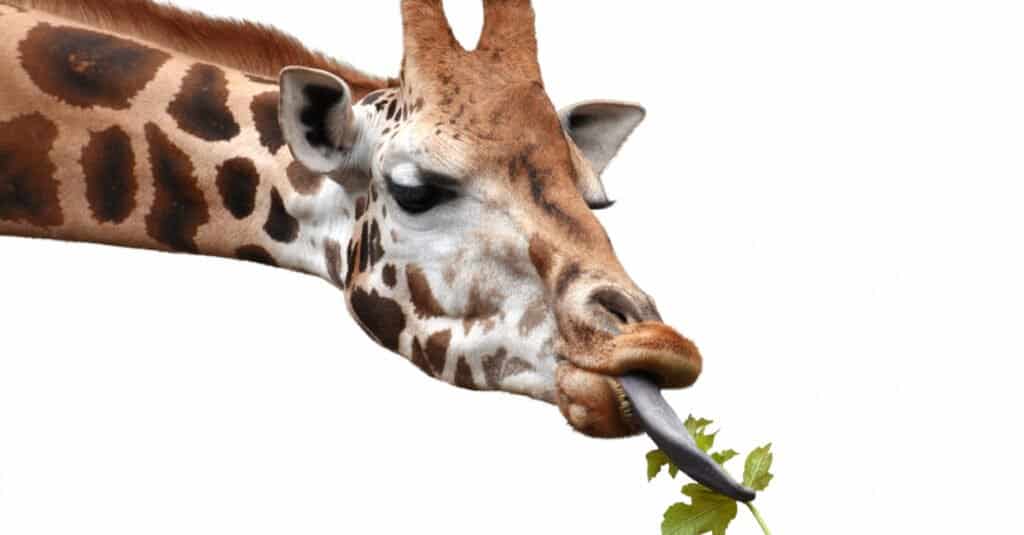
The blue tongue of giraffes may provide sun protection.
©NAPA/Shutterstock.com
6. Animals With Blue Tongues: Chow Chows (Canis lupus familiaris)
Compact, sturdy, and powerful with a bear-like face and featuring a distinctive fur ruff around the head and shoulders, the chow chow (Canis lupus familiaris) is quite a unique dog. Chow chows also sport a blue-black tongue to add to their distinctive features. They aren’t born with these dark tongues. Instead, they are born with pink tongues that turn blue-black around 8-10 weeks of age.
Currently, scientists don’t know what purpose the blue tongue may serve the chow chow if it is indeed a beneficial adaptation. However, the blue tongue of this dog is so tied to the chow chow that it is a part of the official breed standards.

Having a blue tongue is part of the breed standard for chow chows.
©VKarlov/iStock via Getty Images
7. Impalas (Aepyceros spp.)
A medium-sized antelope, the impala (Aepyceros spp.) ranges widely across savannas and plains throughout south-central Africa. These deer-like animals are swift herbivores congregating in large herds for better protection against predators. These blue-tongued herbivores graze on grasses and browse on the stems, bark, and leaves of shrubs and small trees.
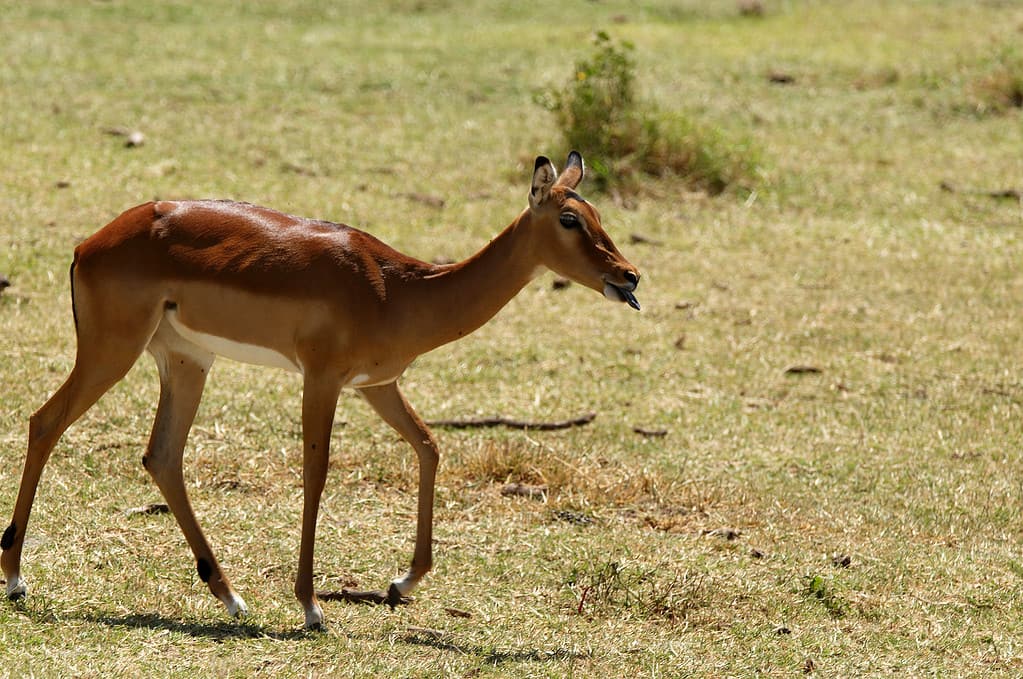
Impalas are blue-tongued herbivores native to south-central Africa.
©© Alexei Zarubin/iStock via Getty Images
8. Animals With Blue Tongues: Okapis (Okapia johnstoni)
Okapis (Okapis johnstoni) and giraffes are the only two extant members of the Giraffidae family. Like their giraffe relatives, okapis have long, prehensile tongues to grasp leaves, twigs, and other vegetation. With striped legs, large ears, and an elongated neck, their blue tongue represents just one aspect of the okapi’s distinctive characteristics. Like the giraffe, their blue-black tongue likely protects against UV radiation in their homeland of the Democratic Republic of the Congo.
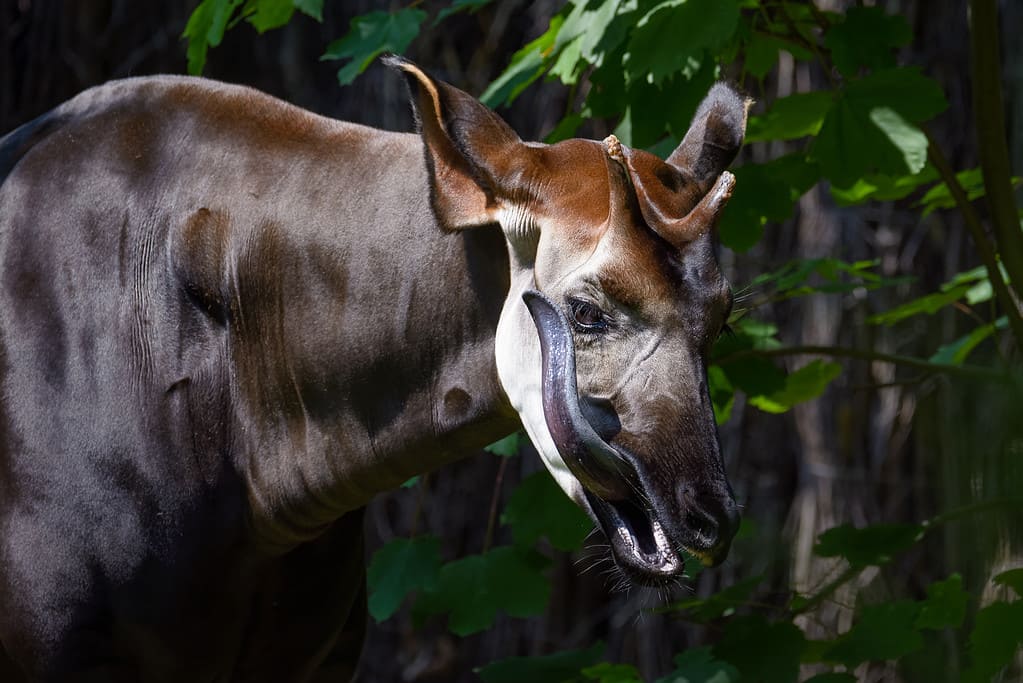
The okapi’s elongated blue tongue also likely provides natural sunscreen.
©Thorsten Spoerlein/ via Getty Images
9. Shar-Pei (Canis lupus familiaris)
The only other dog breed to consistently sport a blue or blue-black tongue is the Chinese shar-pei. Like the chow chow, shar-pei puppies don’t develop the blue coloration of their tongues until about 8-10 weeks of age. This breed may feature an entirely blue tongue or blue spotting over a pink base. Shar-peis with completely blue tongues also typically feature a blue-black muzzle and blue coloration around their eyes.

The shar-pei often features an entirely or spotted blue tongue.
©GlobalP/iStock via Getty Images
The photo featured at the top of this post is © Thorsten Spoerlein/ via Getty Images
Thank you for reading! Have some feedback for us? Contact the AZ Animals editorial team.






